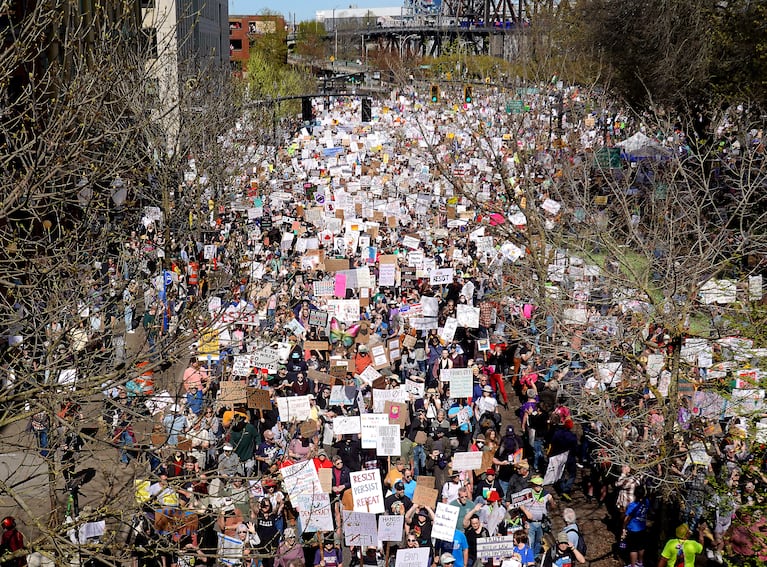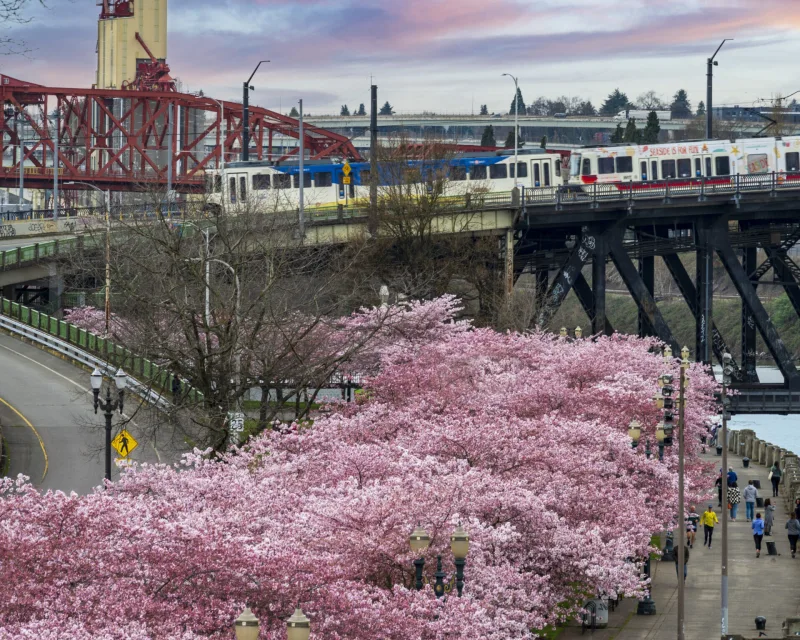Cities and city streets are the place where we exercise our most fundamental rights.
“The right of the people peacefully to assemble” guaranteed by the First Amendment only has meaning if the people have a place in which to assemble.
In Portland, on April 5, tens of thousands marched to voice their objections to the Trump Administration. The march wasn’t in a random location, it was in a place rich with meaning for the city and the Constitution.

They marched on the site of the former Harbor Drive Freeway, torn out by the city fifty years ago–in response to strong public objections to freeways cutting through the middle of the city. The exact site of this demonstration looked very different a little over half a century ago.

Not only did Portland tear out the waterfront freeway, it used the money it saved from cancelling another proposed freeway to build the first line of its light rail transit system (seen below crossing the Steel Bridge). The former freeway is also now home to the Japanese-American Historical Plaza, which honors the hundreds of thousands of Japanese-American citizens illegally imprisoned in detention camps during World War II.

The boulevard adjacent to the plaza, and abutting Waterfront Park–Naito Parkway–is now named for Bill Naito, whose was family was forced to leave Oregon to avoid internment after Pearl Harbor; Naito went on to serve in the US Army during the Second World War. Naito Parkway is where tens of thousands of Portlanders marched to protest Trump Administration policies. Naito became a great civic leader, instrumental in the revival of downtown Portland.
